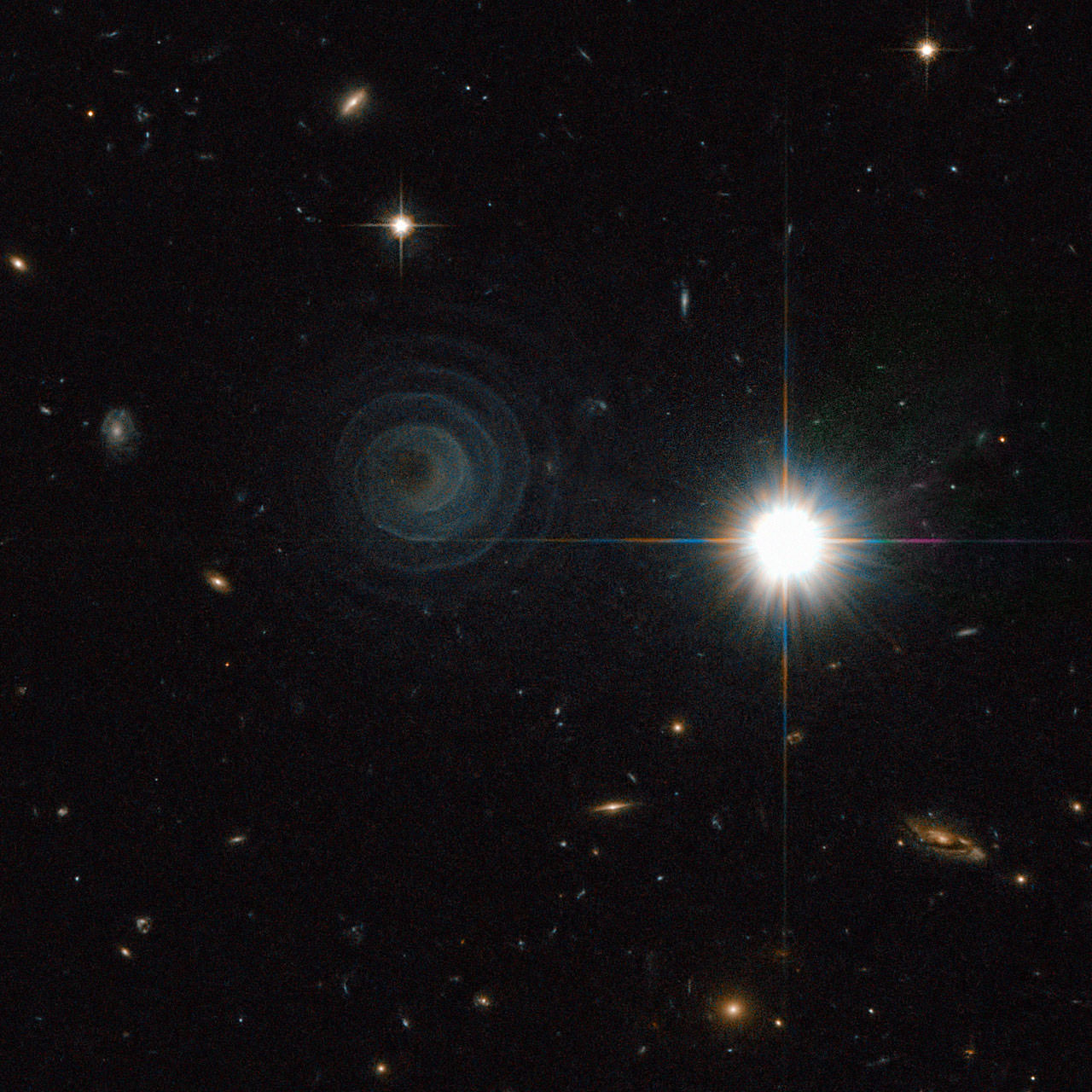[/caption]
The Hubble Space Telescope’s Advanced Camera for Surveys has captured a remarkable image of a spiral in space. No, not a spiral galaxy, (and not another Norway Spiral!) but the formation of an unusual pre-planetary nebula in one of the most perfect geometrical spirals ever seen. The nebula, called IRAS 23166+1655, is forming around the star LL Pegasi (also known as AFGL 3068) in the constellation of Pegasus.
The image shows what appears to be a thin spiral pattern of amazing precision winding around the star, which is itself hidden behind thick dust. Mark Morris from UCLA and an international team of astronomers say that material forming the spiral is moving outwards at a speed of about 50,000 km/hour and by combining this speed with the distance between layers, they calculate that the shells are each separated by about 800 years.
The spiral pattern suggests a regular periodic origin for the nebula’s shape, and astronomers believe that shape is forming because LL Pegasi is a binary star system. One star is losing material as it and the companion star are orbiting each other. The spacing between layers in the spiral is expected to directly reflect the orbital period of the binary, which is estimated to be also about 800 years.
A progression of quasi-concentric shells has been observed around a number of preplanetary nebulae, but this almost perfect spiral shape is unique.
Morris and his team say that the structure of the AFGL 3068 envelope raises the possibility that binary companions are responsible for quasi-concentric shells in most or all of the systems in which they have been observed, and the lack of symmetry in the shells seen elsewhere can perhaps be attributed to orbital eccentricity, to different projections of the orbital planes, and to unfavorable illumination geometries.
Additionally – and remarkably — this object may be illuminated by galactic light.
This image appears like something from the famous “Starry Night” painting by Vincent van Gogh, and reveals what can occur with stars that have masses about half that of the Sun up to about eight times that of the Sun. They do not explode as supernovae at the ends of their lives, but instead can create these striking and intricate features as their outer layers of gas are shed and drift into space. This object is just starting this process and the central star has yet to emerge from the cocoon of enveloping dust.
Abstract: A Binary-Induced Pinwheel Outflow from the Extreme Carbon Star, AFGL 3068
Source: ESA

